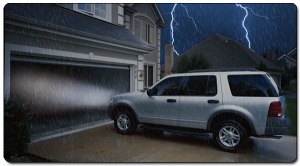 Ride through any housing development built in the last 15 or 20 years, and one aspect of the homes jumps out: the garage is right up front.
Ride through any housing development built in the last 15 or 20 years, and one aspect of the homes jumps out: the garage is right up front.
So it follows that a recent online survey found that 71 percent of homeowners use their garage door as the primary access point to their home. It’s so common that many people no longer carry house keys.
The problem comes when there’s a power outage and access to your home can be impeded.
I had a guy tell me he was trapped outside of his house several days. The power went out, his family was out of town, he didn’t have a house key, and he ended up at the neighbors’ for four or five days.
For getting out in a power outage, modern garage door openers have an emergency pull cord. You give a yank, and it disengages the door, allowing you to open it by hand. (If your garage door is balanced and working properly, you should be able to open it with two fingers.) But there are people who don’t know how the pull-cord works, and the process can be too much for the elderly or people with disabilities. And even if you can open the door to get out, there can be a big problem.
It’s not so much about getting out, it’s about getting in. When you do get out, you have to get back inside and re-engage the garage door opener to make sure it’s locked. Otherwise, the garage — and your home — may not be secure.
The convenient, no-hassle solution is a garage door opener with battery backup. The battery back-up openers control only the doors, not the lights. That’s to save power. The opener will operate for 20 up-and-down cycles, which should get people through almost any power outage.
All of us have become very dependent on garage door openers. They’ve become a necessity instead of the luxury item that they were years ago. It’s a very small investment to control the access to your home.






